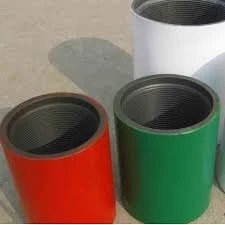- Afrikaans
- Albanian
- Amharic
- Arabic
- Armenian
- Azerbaijani
- Basque
- Belarusian
- Bengali
- Bosnian
- Bulgarian
- Catalan
- Cebuano
- Corsican
- Croatian
- Czech
- Danish
- Dutch
- English
- Esperanto
- Estonian
- Finnish
- French
- Frisian
- Galician
- Georgian
- German
- Greek
- Gujarati
- Haitian Creole
- hausa
- hawaiian
- Hebrew
- Hindi
- Miao
- Hungarian
- Icelandic
- igbo
- Indonesian
- irish
- Italian
- Japanese
- Javanese
- Kannada
- kazakh
- Khmer
- Rwandese
- Korean
- Kurdish
- Kyrgyz
- Lao
- Latin
- Latvian
- Lithuanian
- Luxembourgish
- Macedonian
- Malgashi
- Malay
- Malayalam
- Maltese
- Maori
- Marathi
- Mongolian
- Myanmar
- Nepali
- Norwegian
- Norwegian
- Occitan
- Pashto
- Persian
- Polish
- Portuguese
- Punjabi
- Romanian
- Russian
- Samoan
- Scottish Gaelic
- Serbian
- Sesotho
- Shona
- Sindhi
- Sinhala
- Slovak
- Slovenian
- Somali
- Spanish
- Sundanese
- Swahili
- Swedish
- Tagalog
- Tajik
- Tamil
- Tatar
- Telugu
- Thai
- Turkish
- Turkmen
- Ukrainian
- Urdu
- Uighur
- Uzbek
- Vietnamese
- Welsh
- Bantu
- Yiddish
- Yoruba
- Zulu
well casing coupling
Understanding Well Casing Couplings A Comprehensive Overview
In the world of oil and gas drilling, the integrity and reliability of the wellbore structures are paramount. One crucial component that plays a significant role in maintaining this integrity is the well casing coupling. This article delves into the importance, types, specifications, and applications of well casing couplings in drilling operations.
What is Well Casing?
Before discussing couplings, we must first understand what well casing is. Casing is a series of steel pipes that are inserted into the borehole after drilling to maintain the stability of the wellbore and protect it from contamination. The casing also isolates different geological formations, preventing fluids from migrating between strata and ensuring that oil or gas can be extracted efficiently.
What are Well Casing Couplings?
Casing couplings are short lengths of pipe that connect two pieces of casing together. They are critical components in constructing a wellbore, allowing for the extension of casing sections to reach the desired depth. Couplings ensure that the casing remains secure and aligned while also bearing the various loads and pressures exerted during drilling operations.
Types of Well Casing Couplings
There are several types of casing couplings, each designed for specific applications and environments
1. Threaded Couplings These are the most commonly used type, featuring external and internal threads that securely connect two casing pipes. The threads can be either standard or premium, depending on the pressure and environmental demands.
2. Welded Couplings These couplings are welded onto the casing pipes, providing a more robust and leakage-proof connection. Welded couplings are often used in high-pressure applications where the risk of failure could lead to catastrophic results.
3. Hinged Couplings Specifically designed for scenarios where flexibility is needed, hinged couplings allow for some movement between casing sections. This is particularly useful in regions prone to seismic activity.
well casing coupling

4. Specialty Couplings For unique applications, such as deep-water drilling or high-temperature environments, specialty couplings are designed with advanced materials and engineering techniques to withstand extreme conditions.
Specifications and Standards
Well casing couplings must meet stringent industry specifications to ensure safety and reliability. The American Petroleum Institute (API) sets several standards for casing couplings, including dimensions, material specifications, and performance criteria. Common standards reference API 5CT, which outlines the requirements for casing and tubing used in oil and gas wells.
Couplings must also be manufactured from materials that are corrosion-resistant and can handle the specific pressures and temperatures encountered during drilling. Common materials include carbon steel and stainless steel, often treated or coated to enhance durability.
Applications of Casing Couplings
Casing couplings find their primary application in the oil and gas industry, but they are also essential in geothermal drilling, water well drilling, and other subsurface projects. Their ability to provide structural integrity makes them vital in various scenarios
- Oil and Gas Extraction In oil and gas wells, couplings play a crucial role in ensuring that casing can withstand high pressures while preventing leaks that could lead to environmental hazards.
- Geothermal Projects Casing couplings help maintain the stability and efficiency of geothermal wells, which often operate under extreme temperatures and pressures.
- Environmental Protection By preventing cross-contamination between different water zones, casing couplings contribute to the safe and sustainable extraction of natural resources.
Conclusion
Well casing couplings are more than just simple connectors; they are integral components that ensure the safety, reliability, and efficiency of drilling operations. Understanding their types, specifications, and applications is essential for anyone involved in the oil and gas industry or related fields. As technology advances, we can expect even more innovations in coupling design and materials, further enhancing the integrity of wellbore constructions and the safety of extraction processes.
-
Tubing Pup Joints: Essential Components for Oil and Gas OperationsNewsJul.10,2025
-
Pup Joints: Essential Components for Reliable Drilling OperationsNewsJul.10,2025
-
Pipe Couplings: Connecting Your World EfficientlyNewsJul.10,2025
-
Mastering Oilfield Operations with Quality Tubing and CasingNewsJul.10,2025
-
High-Quality Casing Couplings for Every NeedNewsJul.10,2025
-
Boost Your Drilling Efficiency with Premium Crossover Tools & Seating NipplesNewsJul.10,2025







